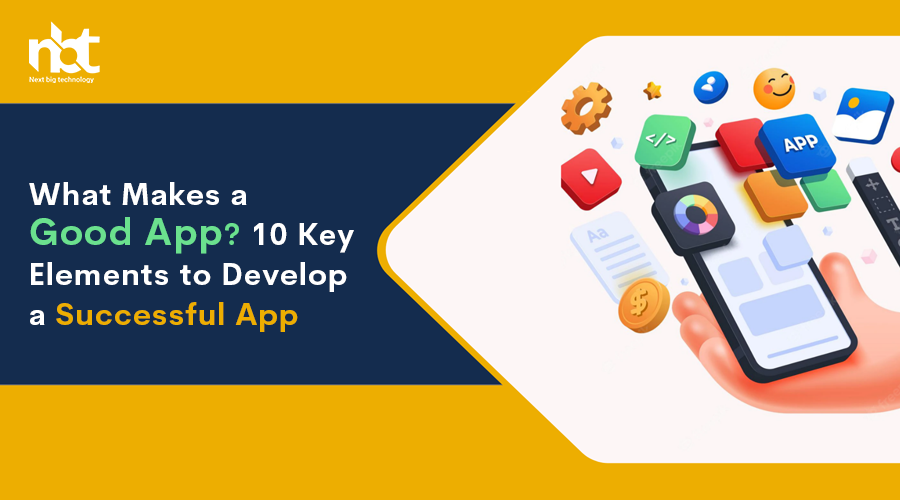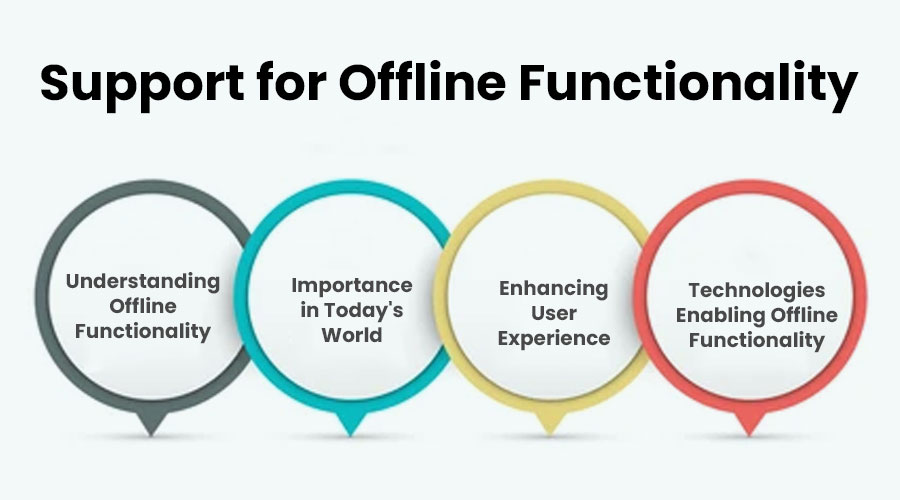Table of Contents
User-Friendly Interface Design
In the realm of digital design, the user interface (UI) stands as the gateway between humans and technology. A well-crafted UI not only mesmerizes users with its aesthetics but also enhances usability, making interactions intuitive and delightful. This comprehensive guide delves into the art of creating user-friendly interface designs that captivate users and elevate their experience.
Understanding User-Friendly Interface Design
User-friendly interface design revolves around creating interfaces that are intuitive, efficient, and enjoyable to use. It emphasizes putting users at the forefront of the design process, understanding their needs, behaviors, and preferences. By prioritizing user-centricity, designers can develop interfaces that seamlessly guide users through tasks, reducing friction and maximizing satisfaction.
Principles of User-Friendly Interface Design
- Simplicity: Keep it simple. Eliminate unnecessary elements and clutter to streamline the user experience. Clear, concise interfaces reduce cognitive load and make navigation effortless.
- Consistency: Maintain consistency across the interface. Use uniformity in layout, typography, color schemes, and interaction patterns to establish familiarity and predictability.
- Clarity: Communicate effectively. Use clear labels, visual cues, and feedback mechanisms to guide users and prevent confusion. Ensure that actions and outcomes are transparent and understandable.
- Accessibility: Design for inclusivity. Consider diverse user needs, including those with disabilities, by implementing features such as alternative text for images, keyboard navigation, and adjustable text sizes.
- Feedback: Provide immediate feedback. Acknowledge user actions promptly through visual, auditory, or haptic cues to confirm successful interactions and reassure users of their progress.
- Hierarchy: Organize content hierarchically. Prioritize important elements, such as primary actions or key information, to guide users’ attention and facilitate task completion.
- Flexibility: Allow for user control. Offer customizable settings and preferences to accommodate varying user preferences and workflows, empowering users to tailor the interface to their needs.
Techniques for Crafting User-Friendly Interfaces
- User Research: Conduct user research to gain insights into user behaviors, goals, and pain points. Use techniques such as surveys, interviews, and usability testing to inform design decisions.
- Wireframing and Prototyping: Create wireframes and prototypes to visualize interface layouts and interactions early in the design process. Iterate based on feedback to refine the design and validate usability.
- Visual Design: Pay attention to visual aesthetics. Use typography, color, imagery, and whitespace strategically to create visually appealing interfaces that enhance readability and usability.
- Responsive Design: Design for multiple devices and screen sizes. Ensure that the interface adapts seamlessly to different resolutions and orientations, providing a consistent experience across platforms.
- Usability Testing: Test the interface with real users to identify usability issues and gather feedback for improvement. Iterate based on testing results to refine the design and optimize user satisfaction.
Compatibility Across Devices and Platforms
In today’s interconnected digital landscape, ensuring compatibility across devices and platforms is not just a matter of convenience but a fundamental requirement for success. With an increasing array of devices and platforms available to users, from smartphones and tablets to desktop computers and smart TVs, achieving seamless compatibility has become a critical consideration for businesses and developers alike.
The Importance of Compatibility
In a world where consumers expect access to information and services anytime, anywhere, regardless of the device or platform they are using, compatibility has emerged as a key determinant of user experience. Whether accessing a website, using a mobile app, or engaging with digital content, users demand consistency and reliability across all their devices.
Failure to deliver a seamless experience can result in frustration, decreased user engagement, and ultimately, loss of business. With competition fiercer than ever, businesses cannot afford to overlook the importance of compatibility if they hope to retain and attract customers in today’s competitive marketplace.
Challenges in Achieving Compatibility
Achieving compatibility across devices and platforms is not without its challenges. The sheer diversity of devices and operating systems in use today presents a significant hurdle for developers. From iOS and Android to Windows and macOS, each platform comes with its own set of technical specifications, design guidelines, and user interface paradigms.
Furthermore, the rapid pace of technological innovation means that new devices and platforms are constantly being introduced to the market, further complicating the compatibility landscape. Keeping up with these changes requires ongoing investment in research, development, and testing to ensure that digital products and services remain compatible with the latest technologies.
Best Practices for Achieving Compatibility
Despite the challenges, there are several best practices that developers can follow to ensure compatibility across devices and platforms:
- Embrace Responsive Design: Responsive design techniques allow websites and applications to adapt dynamically to different screen sizes and orientations, ensuring a consistent user experience across devices.
- Utilize Cross-Platform Development Tools: Cross-platform development frameworks such as React Native, Xamarin, and Flutter enable developers to build apps that run seamlessly on multiple platforms with minimal code duplication.
- Prioritize Compatibility Testing: Thorough testing across a range of devices, browsers, and operating systems is essential for identifying and addressing compatibility issues before they reach end users.
- Follow Platform Guidelines: Adhering to the design and technical guidelines provided by platform vendors such as Apple and Google helps ensure that applications meet the standards and expectations of each platform’s user base.
- Stay Agile: In a rapidly evolving technological landscape, agility is key. Adopting agile development methodologies allows teams to respond quickly to changes and updates, ensuring that products remain compatible with the latest devices and platforms.
Clear and Engaging Content Presentation
In the dynamic world of digital communication, where attention spans are shorter than ever, mastering the art of clear and engaging content presentation is crucial for success. Whether you’re crafting a blog post, designing a presentation, or developing website content, how you present your ideas can make all the difference in capturing and retaining your audience’s attention. Let’s delve into some effective strategies to elevate your content presentation game.
Understanding Your Audience
Before diving into content creation, take the time to understand your target audience. What are their interests, pain points, and preferences? Tailoring your content to resonate with your audience ensures that it’s relevant and engaging to them. Conducting surveys, analyzing demographics, and studying customer feedback can provide valuable insights into your audience’s preferences.
Start with a Strong Hook
The beginning of your content sets the tone for the entire piece. Capture your audience’s attention from the outset with a compelling hook. This could be an intriguing question, a shocking statistic, a captivating anecdote, or a bold statement. By piquing curiosity early on, you encourage readers or viewers to continue engaging with your content.
Keep it Concise and Organized
In today’s fast-paced digital landscape, brevity is key. Avoid overwhelming your audience with lengthy paragraphs or cluttered visuals. Instead, strive for clarity and conciseness in your content. Break up text into digestible chunks, utilize bullet points and subheadings, and incorporate whitespace to enhance readability. Organize your content in a logical flow, guiding your audience seamlessly from one point to the next.
Visual Appeal Matters
Humans are visual creatures, and incorporating eye-catching visuals can significantly enhance content engagement. Whether it’s high-quality images, infographics, videos, or animations, visual elements can complement your written content and convey information more effectively. Ensure that your visuals are relevant, aesthetically pleasing, and aligned with your brand’s style and messaging.
Incorporate Multimedia Elements
Diversify your content presentation by incorporating multimedia elements such as audio clips, interactive widgets, or embedded social media posts. This not only adds variety but also provides an immersive experience for your audience. Interactive content encourages active participation, keeping your audience engaged and invested in your message.
Tell a Compelling Story
Storytelling is a powerful tool for capturing attention and fostering emotional connection. Weave narratives into your content to illustrate key points, humanize your message, and evoke empathy or inspiration. Whether it’s sharing customer success stories, personal anecdotes, or industry insights, storytelling adds depth and resonance to your content presentation.
Optimize for Search Engines
Incorporate relevant keywords, meta tags, and descriptive titles to optimize your content for search engines. Conduct keyword research to identify phrases your target audience is searching for, and strategically integrate them into your content without compromising readability. By optimizing for SEO, you increase the visibility of your content and attract organic traffic to your website or platform.
Encourage Interaction and Feedback
Engage your audience by inviting interaction and feedback. Encourage comments, questions, and social media shares to foster a sense of community around your content. Actively respond to comments and messages, demonstrating that you value your audience’s input and fostering two-way communication. Incorporating user-generated content or conducting polls and surveys can further enhance engagement and provide valuable insights.
Continuously Improve and Iterate
Finally, don’t be afraid to experiment, learn, and iterate. Monitor analytics data to gauge the performance of your content and identify areas for improvement. Test different presentation styles, formats, and messaging strategies to see what resonates best with your audience. By staying adaptable and responsive to feedback, you can continuously refine your content presentation and stay ahead in the competitive digital landscape.
Personalization and Customization Options
In today’s fast-paced and highly competitive market, businesses are constantly seeking innovative ways to stand out from the crowd and connect with their audience on a deeper level. One strategy that has gained significant traction is the implementation of personalization and customization options. These powerful tools allow businesses to tailor their products, services, and experiences to meet the unique needs and preferences of individual customers, ultimately driving engagement, loyalty, and revenue.
Personalization and customization are often used interchangeably, but they represent distinct approaches to meeting customer needs. Personalization involves using data and insights to deliver targeted and relevant content, recommendations, and experiences to individual customers. This could include personalized product recommendations based on past purchases, customized marketing messages tailored to specific demographics or interests, or personalized user interfaces that adapt to each user’s preferences.
On the other hand, customization empowers customers to personalize products or services according to their own preferences and specifications. This could involve choosing the color, size, features, or design elements of a product, or selecting the level of service that best fits their needs. Customization puts the power in the hands of the customer, allowing them to create a unique and personalized experience that resonates with their individual tastes and preferences.
The benefits of personalization and customization are clear. By delivering more relevant and tailored experiences, businesses can enhance customer satisfaction, increase engagement, and build stronger relationships with their audience. Research has shown that personalized experiences can lead to higher conversion rates, increased customer loyalty, and ultimately, greater revenue and profitability.
Moreover, personalization and customization options can also provide valuable insights into customer behavior and preferences. By tracking and analyzing customer interactions and choices, businesses can gain a deeper understanding of their audience and use this data to inform future product development, marketing strategies, and business decisions.
In today’s digital age, technology plays a crucial role in enabling personalization and customization at scale. Advanced analytics, machine learning, and artificial intelligence algorithms can analyze vast amounts of data in real-time to deliver personalized recommendations and experiences across multiple channels and touchpoints. From e-commerce platforms that offer personalized product recommendations to streaming services that curate customized playlists based on individual preferences, technology has made it easier than ever for businesses to personalize and customize their offerings.
However, it’s essential for businesses to strike the right balance between personalization and privacy. While customers appreciate personalized experiences, they also value their privacy and data security. Businesses must be transparent about how they collect, use, and protect customer data and give customers control over their personal information. By respecting customer privacy and building trust, businesses can create more meaningful and lasting relationships with their audience.
Efficient Use of Resources
In an era marked by burgeoning populations and finite resources, the efficient utilization of resources has become paramount for sustainable development. From energy and water to raw materials and human capital, every resource must be managed judiciously to minimize waste and maximize productivity. In this article, we delve into the importance of resource efficiency and explore actionable strategies to achieve it.
Understanding Resource Efficiency
Resource efficiency entails extracting the maximum value from available resources while minimizing waste and environmental impact. It encompasses various aspects, including:
- Energy Efficiency: Reducing energy consumption through efficient technologies and practices not only conserves resources but also mitigates greenhouse gas emissions.
- Water Conservation: Given the growing scarcity of freshwater, optimizing water usage in agriculture, industry, and households is essential for sustainable water management.
- Material Optimization: Adopting circular economy principles, such as recycling and reusing materials, minimizes extraction and reduces the burden on ecosystems.
- Human Capital Development: Investing in education, healthcare, and skills training enhances the productivity of human resources, fostering economic growth while improving social well-being.
Benefits of Resource Efficiency
Embracing resource efficiency offers numerous advantages:
- Cost Savings: By reducing waste and optimizing processes, businesses can lower production costs and enhance competitiveness.
- Environmental Protection: Resource-efficient practices help conserve natural habitats, reduce pollution, and mitigate climate change, safeguarding ecosystems for future generations.
- Innovation Stimulus: The pursuit of resource efficiency drives innovation, leading to the development of cleaner technologies and sustainable business models.
- Resilience: Building resilience to resource scarcity and price volatility ensures long-term viability for businesses and communities.
Strategies for Efficient Resource Utilization
To harness the benefits of resource efficiency, organizations and individuals can implement the following strategies:
- Invest in Technology: Embrace innovative technologies such as renewable energy, energy-efficient appliances, and smart meters to optimize resource use.
- Promote Circular Economy: Design products with recyclability in mind, implement closed-loop systems, and encourage consumers to participate in recycling programs.
- Optimize Supply Chains: Streamline supply chains to minimize transportation distances, reduce packaging waste, and enhance overall efficiency.
- Educate and Empower: Raise awareness about the importance of resource efficiency among employees, customers, and stakeholders. Provide training and incentives to encourage sustainable practices.
- Policy Support: Advocate for supportive policies and regulations that incentivize resource-efficient practices and penalize wasteful behavior.
Social Media Integration and Sharing Features
In today’s digital landscape, social media integration and sharing features have become indispensable tools for businesses aiming to maximize their online presence and engage with their audience effectively. With the ever-increasing reliance on social platforms for communication, information sharing, and networking, integrating these features into websites and applications has become a strategic imperative. Let’s delve into the significance of social media integration and sharing features and how they can elevate user engagement.
Understanding Social Media Integration:
Social media integration involves incorporating social media elements such as sharing buttons, social login options, embedded feeds, and social media commenting systems into websites or applications. This integration facilitates seamless interaction between users and social platforms, allowing them to share content effortlessly, connect with their social networks, and amplify the reach of the brand.
Benefits of Social Media Integration and Sharing Features:
1. Expanded Reach and Visibility: By integrating social media sharing buttons across your digital platforms, you empower users to share your content with their networks, thereby expanding your brand’s reach organically. This amplification effect can lead to increased visibility, attracting new audiences and driving traffic to your website or app.
2. Enhanced User Engagement: Social media integration fosters active engagement by enabling users to interact with your content in familiar ways. Whether it’s liking, commenting, or sharing, these features encourage user participation, sparking discussions, and generating valuable user-generated content.
3. Improved Brand Credibility and Trust: A strong social media presence signals credibility and trustworthiness to your audience. When users see that your content is being shared and endorsed by others within their social circles, it enhances the perception of your brand’s authority and reliability.
4. Data Insights and Analytics: Social media integration provides valuable insights into user behavior and preferences. By tracking social sharing metrics, you can gain a deeper understanding of which content resonates most with your audience, allowing you to refine your content strategy and tailor future offerings accordingly.
Best Practices for Social Media Integration:
1. Seamlessness is Key: Ensure that the integration of social media features seamlessly aligns with your website or app’s design and functionality. Intuitive placement of sharing buttons and non-intrusive social login options enhance user experience without disrupting navigation.
2. Prioritize Relevance: Offer a variety of social sharing options, but prioritize platforms that are most relevant to your target audience and industry. Tailor your sharing buttons and content to cater to the preferences of your demographic.
3. Optimize for Mobile: Given the prevalence of mobile usage, it’s crucial to optimize social media integration for mobile responsiveness. Buttons should be easily accessible and finger-friendly, facilitating sharing on-the-go.
4. Monitor and Iterate: Regularly monitor the performance of your social media integration efforts through analytics tools. Pay attention to engagement metrics, user feedback, and trends to refine your approach and adapt to evolving user behaviors.
Accessibility for Diverse User Needs
In today’s digital landscape, accessibility isn’t just a buzzword; it’s a fundamental pillar of inclusive design. As technology continues to advance, it’s crucial to ensure that digital platforms, websites, and applications are accessible to everyone, regardless of their abilities or disabilities. This commitment to inclusivity not only fosters equality but also expands the reach and impact of digital content. In this article, we’ll delve into the importance of accessibility for diverse user needs and explore practical strategies for achieving it.
Understanding Diverse User Needs:
Accessibility encompasses a wide spectrum of user needs, including those with visual, auditory, motor, cognitive, and neurological impairments. For instance, individuals with visual impairments may rely on screen readers or braille displays, while those with auditory impairments may require captions or transcripts for multimedia content. Additionally, users with motor impairments might utilize alternative input devices or keyboard shortcuts, whereas individuals with cognitive disabilities may benefit from simplified layouts and clear navigation.
The Importance of Accessibility:
Embracing accessibility isn’t just a legal requirement; it’s a moral imperative and a business opportunity. By making digital content accessible, organizations can tap into a broader audience base, enhance user satisfaction, and foster brand loyalty. Moreover, accessible design often improves usability for all users, leading to a more intuitive and enjoyable experience. Ultimately, prioritizing accessibility aligns with ethical principles and strengthens the overall fabric of society.
Practical Strategies for Enhancing Accessibility:
- Semantic HTML: Use semantic HTML markup to provide structure and context to content, making it easier for screen readers to interpret and navigate.
- Alt Text for Images: Include descriptive alt text for images to ensure that users with visual impairments can understand the content. Avoid generic phrases like “image123.jpg” and instead provide meaningful descriptions.
- Keyboard Navigation: Ensure that all interactive elements are accessible via keyboard navigation. Users should be able to navigate through your website or application using only the keyboard, without relying on a mouse.
- Color Contrast: Maintain sufficient color contrast between text and background elements to enhance readability, especially for users with low vision or color blindness.
- Multimedia Accessibility: Provide captions, transcripts, and audio descriptions for multimedia content such as videos and podcasts, making them accessible to users with auditory or visual impairments.
- Responsive Design: Implement responsive design principles to ensure that your content adapts seamlessly to different screen sizes and devices, accommodating users with varying capabilities and preferences.
- User Testing: Conduct regular usability testing with individuals representing diverse user needs to identify and address accessibility barriers effectively.
Analytics and Data-Driven Decision Making
In today’s fast-paced business landscape, the ability to make informed decisions is paramount for success. With the advent of technology, businesses now have access to vast amounts of data generated from various sources. This data can be a goldmine of insights, provided it is effectively analyzed and utilized. This is where analytics and data-driven decision making come into play.
Understanding Analytics: Analytics involves the systematic analysis of data to uncover meaningful patterns, trends, and correlations. It encompasses a range of techniques and tools, including statistical analysis, predictive modeling, and machine learning algorithms. By leveraging analytics, organizations can gain valuable insights into their operations, customer behavior, market trends, and more.
The Importance of Data-Driven Decision Making: Data-driven decision making is the process of using data to inform and guide strategic and operational decisions. Unlike traditional decision-making approaches that rely on intuition or gut feeling, data-driven decision making relies on empirical evidence and objective analysis. This approach helps organizations make more informed choices, mitigate risks, and capitalize on opportunities.
Benefits of Analytics and Data-Driven Decision Making:
- Improved Accuracy: By relying on data rather than intuition, organizations can make more accurate predictions and decisions.
- Enhanced Efficiency: Data-driven decision making streamlines processes and eliminates guesswork, leading to greater efficiency and productivity.
- Better Customer Insights: Analytics enables organizations to understand customer preferences, behavior, and needs better, allowing them to tailor products and services accordingly.
- Competitive Advantage: Organizations that effectively harness analytics have a competitive edge, as they can anticipate market trends, identify emerging opportunities, and respond swiftly to changes.
- Risk Mitigation: Data-driven decision making helps organizations identify and mitigate risks, whether they are related to operations, finances, or compliance.
Implementing Analytics and Data-Driven Decision Making: To reap the benefits of analytics and data-driven decision making, organizations need to adopt a systematic approach:
- Data Collection: Collect relevant data from internal and external sources, ensuring its accuracy, completeness, and relevance.
- Data Analysis: Analyze the data using appropriate tools and techniques to uncover insights and patterns.
- Decision Making: Use the insights gained from data analysis to inform decision making at all levels of the organization.
- Monitoring and Iteration: Continuously monitor outcomes and iterate strategies based on new data and insights.
Support for Offline Functionality
In today’s digital era, where connectivity seems to be the lifeline of our daily activities, the concept of offline functionality might appear counterintuitive. However, the ability to support offline functionality is becoming increasingly vital, revolutionizing the way we interact with technology. This feature not only ensures uninterrupted access to essential services but also significantly enhances user experience.
Understanding Offline Functionality: Offline functionality refers to the capability of a digital system or application to operate without an active internet connection. While the internet has undoubtedly made our lives more convenient, there are times when access to a stable connection is limited or nonexistent. In such scenarios, offline functionality becomes invaluable, allowing users to continue their tasks seamlessly.
Importance in Today’s World: The significance of offline functionality is evident across various domains, from productivity tools to entertainment platforms. Consider a scenario where you’re traveling by train or airplane, where internet connectivity is either spotty or unavailable. Without offline functionality, accessing critical documents, emails, or entertainment content would be impossible, leading to frustration and hindered productivity.
Moreover, in regions with unreliable internet infrastructure or during natural disasters when connectivity may be disrupted, offline functionality ensures that essential services remain accessible. For instance, offline maps enable navigation even in remote areas without network coverage, enhancing safety and convenience for travelers.
Enhancing User Experience: Integrating offline functionality into applications not only extends their usability but also significantly enhances the overall user experience. By allowing users to access essential features and content offline, developers empower them to remain productive and entertained irrespective of connectivity constraints.
Furthermore, offline functionality contributes to reducing data usage, which is particularly beneficial for users with limited data plans or those traveling abroad, where roaming charges may apply. This optimization not only conserves data but also enhances battery life, as devices aren’t constantly searching for an internet connection.
Technologies Enabling Offline Functionality: Several technologies enable the implementation of offline functionality across different platforms and applications. Caching mechanisms store frequently accessed data locally, allowing swift retrieval without requiring an internet connection. Similarly, progressive web applications (PWAs) leverage service workers to provide offline access to web content, offering a native app-like experience across devices.
Additionally, synchronization mechanisms facilitate seamless data synchronization between offline and online states, ensuring consistency across devices and platforms. These technologies, coupled with efficient offline-first design principles, enable developers to create robust applications capable of delivering uninterrupted user experiences.
Top 10 Key Elements to Develop a Successful App Companies
In today’s digital age, the mobile app industry is booming, with millions of apps available across various platforms. However, not all app companies achieve success. Building a successful app company requires careful planning, execution, and a keen understanding of what users want. Here are the top 10 key elements to develop a successful app company:
-
-
Next Big Technology:

Focus Area
- Mobile App Development
- App Designing (UI/UX)
- Software Development
- Web Development
- AR & VR Development
- Big Data & BI
- Cloud Computing Services
- DevOps
- E-commerce Development
Industries Focus
- Art, Entertainment & Music
- Business Services
- Consumer Products
- Designing
- Education
- Financial & Payments
- Gaming
- Government
- Healthcare & Medical
- Hospitality
- Information Technology
- Legal & Compliance
- Manufacturing
- Media
-
- Clear Value Proposition: Define a clear value proposition that addresses a specific problem or provides a unique solution to users. Your app should offer tangible benefits that compel users to download and engage with it regularly.
- User-Centric Design: Design your app with the user in mind. Focus on creating an intuitive user interface, smooth navigation, and visually appealing graphics. Conduct usability testing to gather feedback and refine the user experience.
- Platform Compatibility: Ensure your app is compatible with multiple platforms, including iOS, Android, and web browsers. This allows you to reach a broader audience and maximize your app’s potential for success.
- High-Quality Development: Invest in high-quality app development to create a stable, bug-free product. Choose experienced developers who are proficient in the latest programming languages and technologies.
- Performance Optimization: Optimize your app for performance and speed to provide a seamless user experience. Minimize loading times, optimize images and videos, and reduce battery consumption to keep users engaged.
- Robust Security Measures: Implement robust security measures to protect user data and privacy. Encrypt sensitive information, use secure authentication methods, and regularly update your app to patch any vulnerabilities.
- Effective Marketing Strategy: Develop a comprehensive marketing strategy to promote your app and attract users. Utilize various channels such as social media, app store optimization, influencer partnerships, and content marketing to increase visibility.
- User Feedback and Iteration: Continuously gather user feedback through ratings, reviews, and analytics data. Use this feedback to identify areas for improvement and make iterative updates to enhance the app’s functionality and usability.
- Monetization Strategy: Define a clear monetization strategy based on your app’s business model. Whether it’s through in-app purchases, subscriptions, advertising, or a combination of methods, choose the approach that aligns with your target audience and revenue goals.
FAQs On 10 Key Elements to Develop a Successful App
Developing a successful mobile application entails careful consideration of various elements crucial for its functionality, usability, and marketability. Below are answers to some frequently asked questions about the key components necessary for creating a thriving app:
1. What are the essential features of a successful app? A successful app typically includes intuitive user interface design, seamless navigation, fast loading times, reliable performance across different devices, robust security measures, and regular updates to enhance user experience and address any issues.
2. How important is market research before developing an app? Market research is paramount as it helps identify target demographics, analyze competitors, understand user preferences, and uncover potential challenges. By conducting thorough research, developers can tailor their app to meet specific market needs and increase its chances of success.
3. What role does user experience (UX) design play in app development? UX design focuses on creating a positive and enjoyable experience for app users. It involves designing intuitive layouts, easy-to-navigate interfaces, clear instructions, and engaging visuals to ensure that users can interact with the app effortlessly and accomplish their goals seamlessly.
4. Why is scalability essential in app development? Scalability refers to the ability of an app to accommodate a growing number of users and data without compromising performance. It is crucial for handling increased traffic, adapting to changing demands, and supporting future updates and expansions without experiencing technical limitations or downtime.
5. How can app developers ensure data security and privacy? Data security and privacy measures, such as encryption, authentication, and secure transmission protocols, are vital for protecting users’ sensitive information from unauthorized access or breaches. Developers must adhere to industry standards and regulations to safeguard user data and build trust with their audience.
6. What strategies can be employed to monetize an app? App monetization strategies include offering premium features through in-app purchases, displaying advertisements, implementing subscription models, providing freemium versions with limited functionality, and partnering with other businesses for sponsorship or affiliate marketing opportunities.
7. How important is regular testing and quality assurance (QA) in app development? Regular testing and QA are essential to identify and rectify any bugs, glitches, or performance issues before releasing the app to the public. By conducting thorough testing across various devices and platforms, developers can ensure that the app functions as intended and delivers a seamless user experience.
8. What are the best practices for app store optimization (ASO)? App store optimization involves optimizing various elements of the app listing, such as the title, description, keywords, screenshots, and ratings, to improve its visibility and ranking in app store search results. By employing ASO best practices, developers can attract more organic traffic and increase downloads.
9. How can developers engage and retain app users? Engaging and retaining app users requires regular communication, personalized experiences, timely updates, incentives such as rewards or discounts, soliciting feedback, and addressing user concerns promptly. By building a loyal user base, developers can increase app retention and encourage word-of-mouth promotion.
10. What metrics should developers track to measure app performance? Developers should track various metrics, including user acquisition, retention rate, engagement metrics (such as session length and frequency), conversion rates, in-app purchases, customer feedback, app store rankings, and revenue generation, to evaluate the app’s performance and identify areas for improvement.
Thanks for reading our post “What Makes a Good App? 10 Key Elements to Develop a Successful App”. Please connect with us to learn more about Best Develop a Successful App.






















